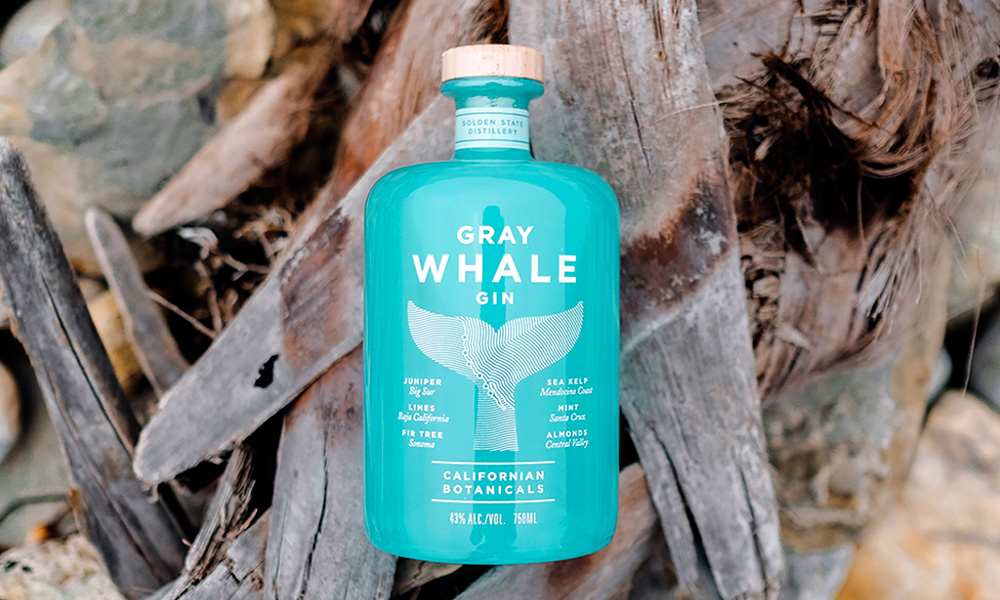

#Gray whale gin series#
Others, like Halftone, use ocean botanicals to evoke faraway places their SVQ gin, part of a series of limited-edition gins that nod to locales around the world, draws inspiration from the “savory salinity” of food and drink from Spain’s Galician coast, folding that in with Seville orange peel, woody olive leaf and white peppercorn.īut the vast majority strives to draw in local flavor-instead of earthbound terroir, a sense of “merroir,” derived from the French word mer, meaning “sea.” Typically, the portmanteau is used to describe the flavor of bivalves, but ginmakers are starting to co-opt the term, too.ġ1 of Our Favorite Gins for Every Drinker Consider the newly released ’66 by Norwegian: The cruise-line gin includes the soft vegetal notes of Salicornia seaweed (also known as sea beans or samphire) to give a coastal vibe. That place may be as vast as the entire ocean. So, it does make sense that gin producers would be inspired by the ocean.” MerroirĪ big part of the draw: These oceanic ingredients evoke a sense of place. “When the Dutch introduced genever (the precursor to modern-day gin) to the U.K., it became so popular that British naval sailors would receive one pint of gin as their daily rations.
#Gray whale gin plus#
“When you go back to the origins of gin, it does indeed have a nautical and maritime component to it,” notes distiller Marsh Mokhtari of Gray Whale Gin, which features foraged Mendocino kombu, among other California-based botanicals (including Big Sur juniper plus mint, fir, lime and almonds) in its citrusy, faintly saline spirit. Some say there’s ample historical precedent for ocean-inspired gins. So, bivalves and other sea creatures are fair game to flavor gin.

regulations that says they must be plant-based. “Botanical”-a word typically relating to plants-is the catch-all term used, but there’s no specification in either the E.U., U.K. That’s right: While juniper must be included to label a spirit as “gin,” there are no restrictions on any other ingredients used to lend fragrance and flavor. Shell Shocked: Why It’s More Important Than Ever to Consider the Oyster “Gin has no rules, aside from the juniper,” observes Manya Rubinstein of The Industrious Spirit Company (ISCO), which is developing a gin infused with oysters and kelp. With all that splashing about, they’re each still considered gin. Unfortunately, not all are available in the U.S. Squid, a colorchanging novelty gin), lobster (Homard and Lobstar Gins, both from Belgium) and pinches of sea salt (Jin Môr Sea Salt Gin, from Wales). But many sea-inspired gins push harder than ever, from a myriad of gins featuring kelp, sea lettuces and other seaweeds to piscatory varieties made with oysters, squid ink (England’s Dr. In recent years, gin producers have really leaned into unusual botanicals beyond the boundaries of classic London dry. If that sounds very different from the usual pine- or citrus-forward gins, that’s exactly what these distillers have in mind. This is just one of a growing number of gins featuring oceanic botanicals designed to add subtle salinity and seaside breeziness to martinis and other drinks. Wild Icelandic kelp adds peppery, briny notes-“it smells to me like pure ocean,” Thomas says-while frilled purple leaves of Drillisk dulse seaweed, sourced from Ireland, are pungent, earthy, with an almost fishy exhale as I nibble a dried leaf that escapes the gin basket.
#Gray whale gin code#
But here was a reminder: visiting Halftone Spirits, located in Brooklyn’s Gowanus neighborhood and finding owner and head distiller Andrew Thomas measuring two types of seaweed to add a subtle umami flavor to his SVQ Gin, named for the airport code for Seville, Spain-a country on the other side of the Atlantic. It’s easy to forget that Brooklyn is bound by the Atlantic Ocean.


 0 kommentar(er)
0 kommentar(er)
